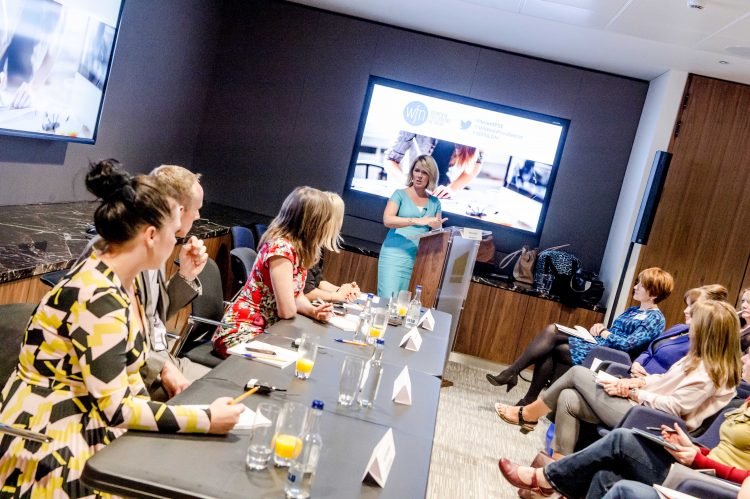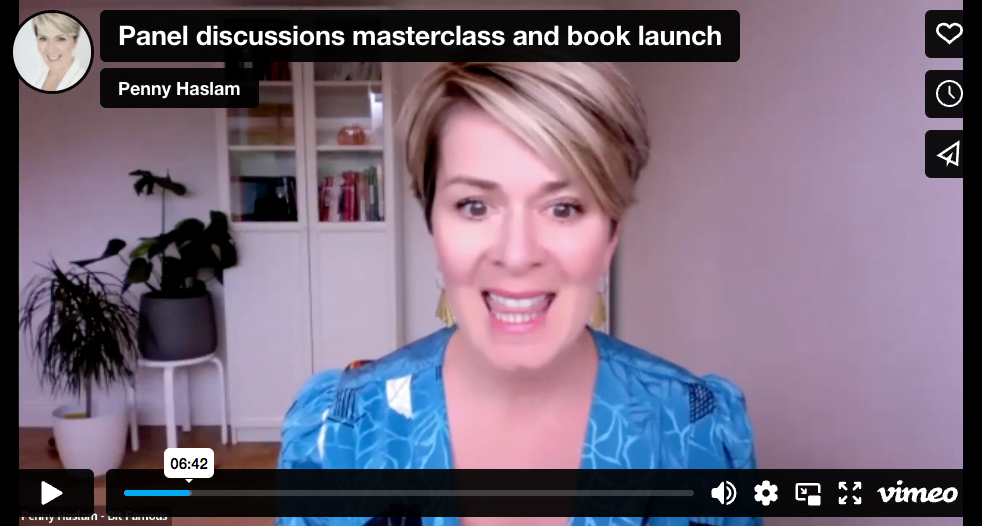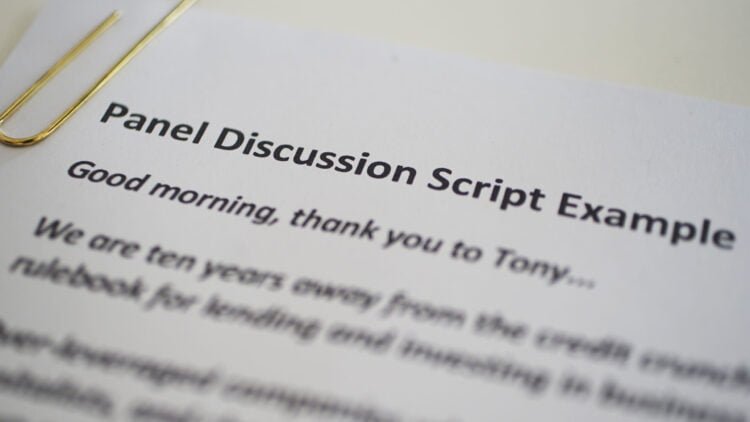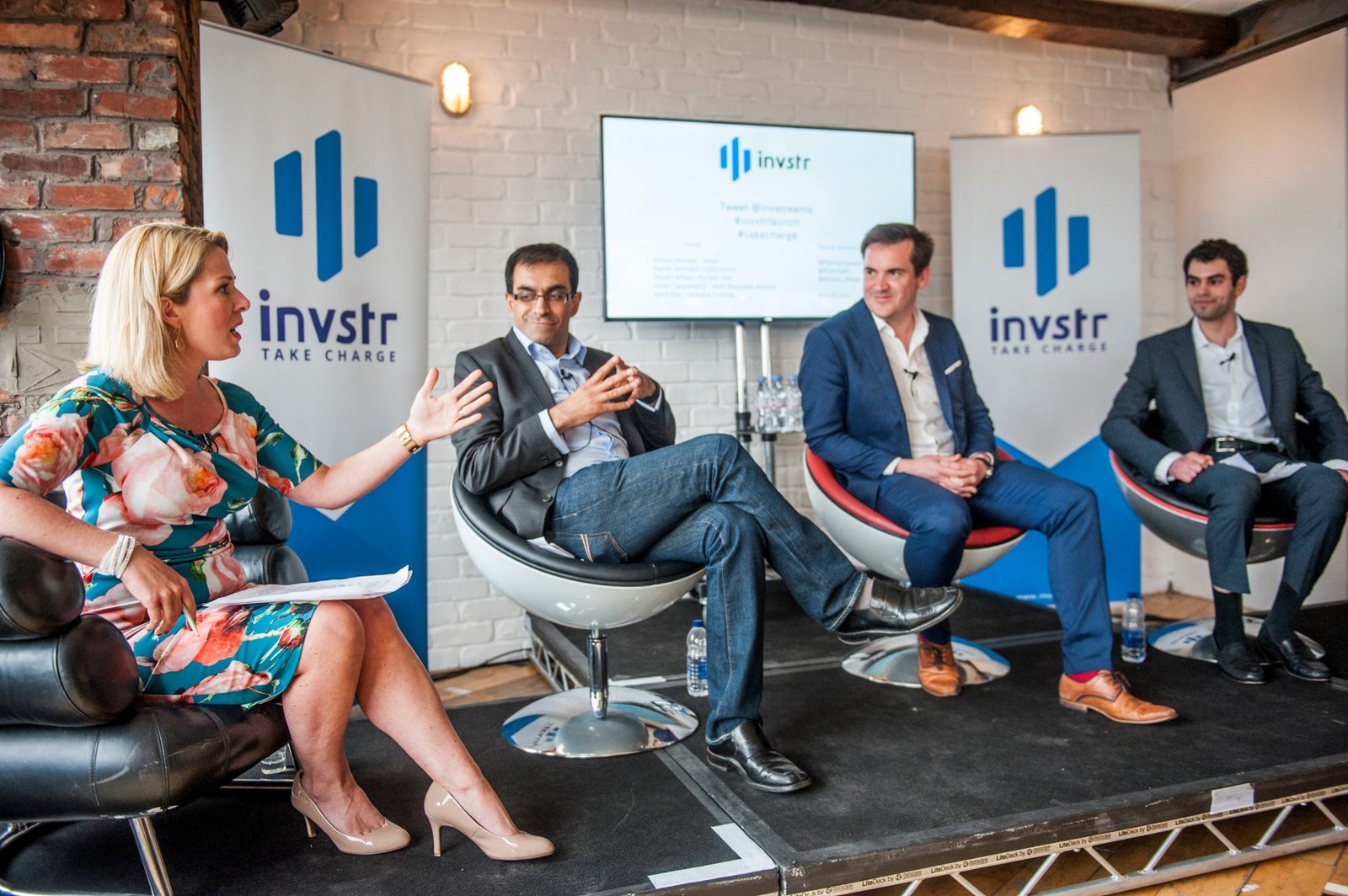
Penny’s five top tips for panel appearances
Penny's five top tips for panel appearances
About the author
Penny is an award-winning motivational speaker & event host.
She's the author of Panel Discussions - The Ultimate Guide
By Penny Haslam
MD and Founder - Bit Famous


Five top tips for panel appearances. Saying yes to being part of a panel discussion is a clever way to shake hands with the whole room in one go – the audience gets to hear about what you do, your business and how you help people. And if your performance is good, you’ll be memorable, likeable – and might make a business connection with someone in the audience, if not immediately, then later down the line.
But what can you do to really stand out as a brilliant panellist?
As a seasoned, professional panel chair here are Penny’s five top tips for a successful performance on a panel:
1. How long have you got?
Working out how much ‘air-time’ you have in which to speak is crucial – so you know how much you can say. For example, if the discussion is 30 minutes and you’re sharing that time with three others (and a panel chair), then you have just six minutes speaking time. Not long! Audience Q&A might be in addition to that time, but find out exactly what the structure is beforehand. Eliminate waffle and get straight to your point.
2. Use real life examples
How many talking shops must we sit through? Blah, blah, ”…as individuals we should be doing this/our industry is focusing on that…”, blah, blah. Liven things up with real life, interesting examples from your own working world. It can illustrate the type of people/clients you work with, how you help, and you can reveal your successes and failures, because you are a real person after all. Examples give everyone something to relate to.
Avoid “Titanicdotes” where you think your story is a good idea, start the journey, only to find it’s too long, sinks and goes nowhere. Rehearse your stories so they are pithy and make an impact.

3. Expand the conversation
Don’t sit quietly waiting to be asked a question by the chair, jump in to the discussion and add to the point being made…this brings energy and a liveliness that holds audience attention. Think dinner party debate, not job interview.
4. Keep your energy up!
Adrenalin and nerves can wreak havoc on your energy levels. You may experience a dip after about half way through when your flight or fight hormones settle down and you realise you’re not going to die as a result of being on a panel. Sluggish panellists make for soporific events.
Take a deep breath, sit up straight, smile and focus.
5. Your Introduction
You’re the best person to write your introduction and make it relevant to the theme of the panel and the audience. An inexperienced chair might be tempted to read the biog from your company website, which is bound to be way too long. Your intro should include who you are, what you do and why we should pay attention to what you’re saying. Email it to the organiser well in advance – and, belt and braces, bring a print out copy to give to the panel chair, just in case.
Write it to be read. Read it out loud and see if it scans OK or if certain words make you stumble. And as tempting as it seems, do NOT include your gap year in Romania, all the boards you’re on, the marathons you’ve run. Keep it snappy so you’re not eating into your own ‘air-time’ (point 1).
Panels are like anything, the more you do, the more your performance becomes polished, fluent and relaxed. So say yes to panels, get the visibility you deserve – and have fun!
Would you like in-house training for would-be panellists and panel chairs at your organisation?
Panel Discussions Book - Free Resources

FREE download: Panel discussion script example

How to interrupt someone during a panel discussion

How to get invited on a panel discussion

Panel Discussions just got better: Finalist in the Business Book Awards 2023

Panel discussions masterclass video
Panel discussion example zoom script

Panel discussion script example
Prepare for a panel discussion: Moderator’s email to panellists
How to introduce panellists – script example

Penny’s five top tips for panel appearances

20 tips for sparkling success as a panel chair

